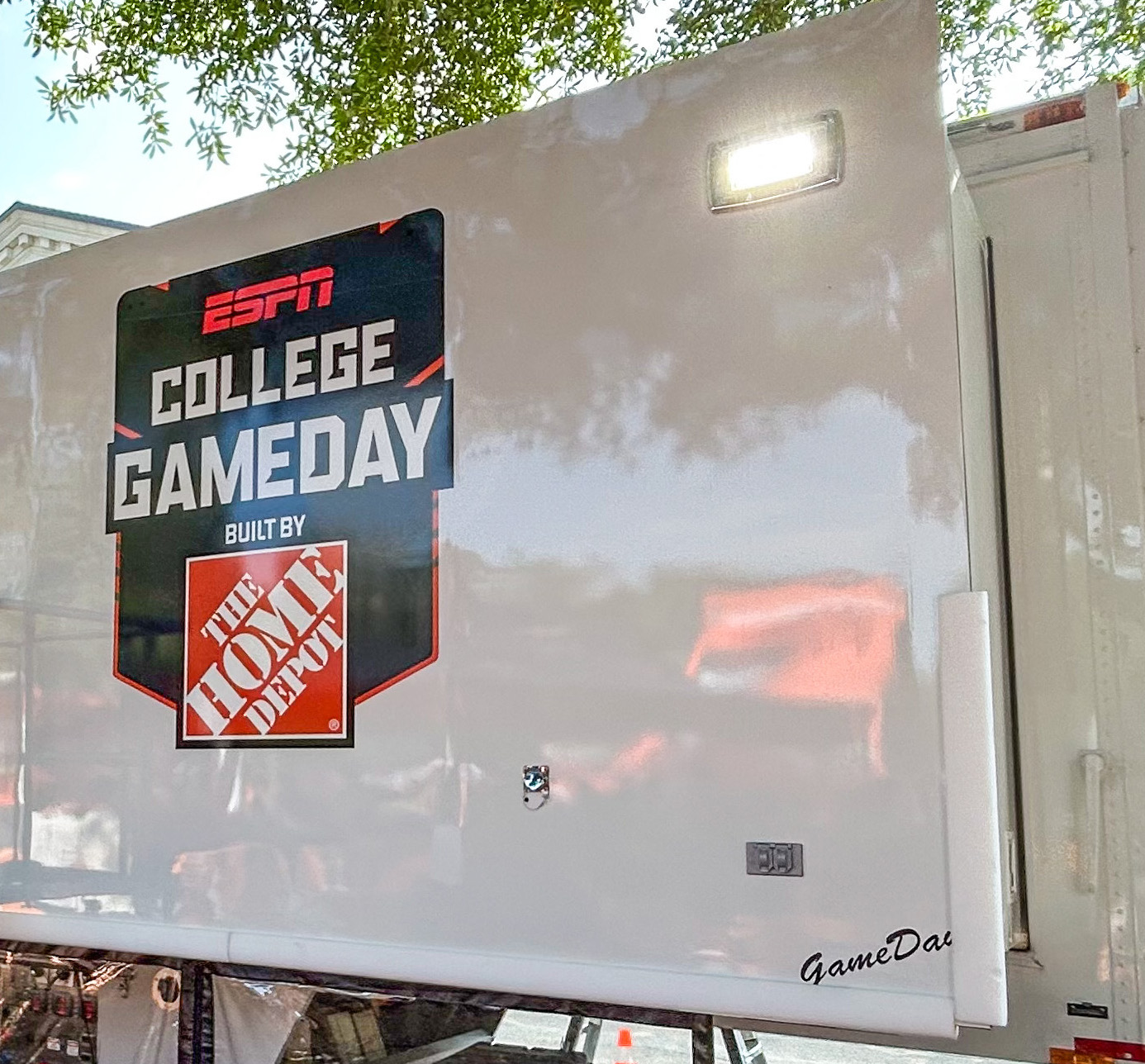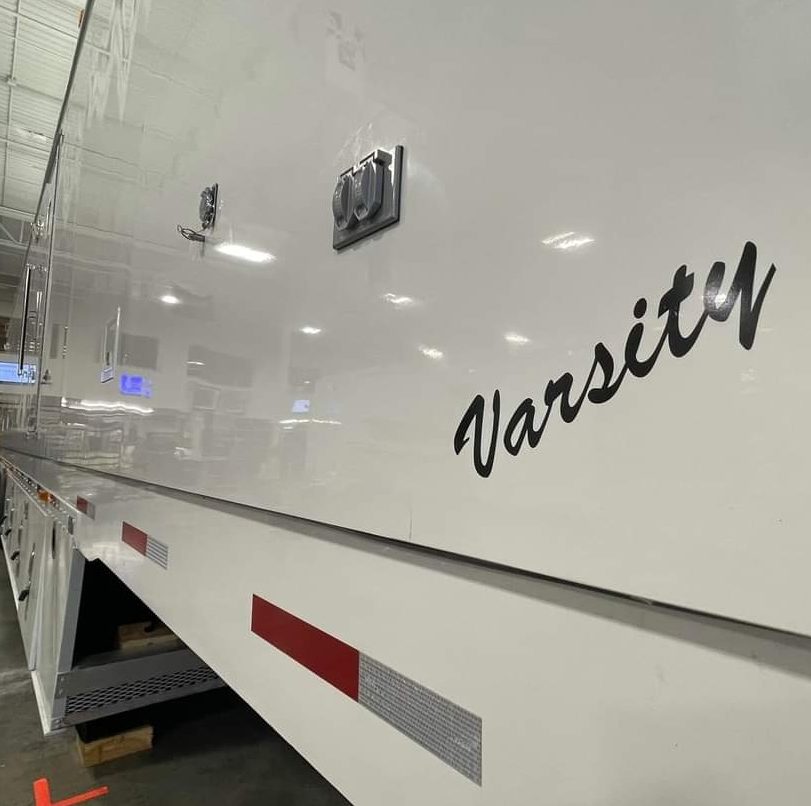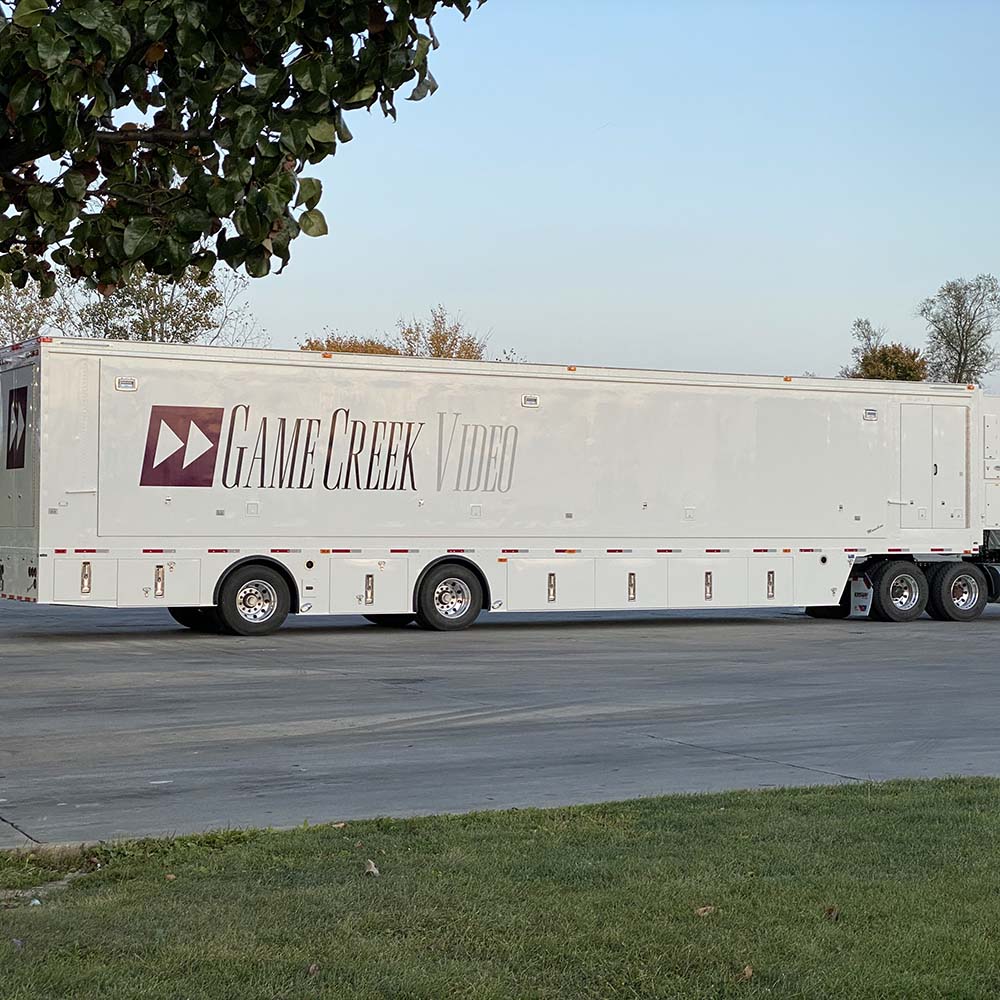SVG Sit-Down: Game Creek Video’s Jason Taubman Goes Inside Latest Truck Builds, Tech Refurbs, Evolution of GCV Anywhere
Varsity, Gameday, Moonshine launched in 2023; HD trucks are being revamped to extend their life
Story Highlights
There’s never a quiet day at Game Creek Video’s shop in Hudson, NH. Whether it’s building new mobile units, refurbishing existing trucks, or architecting new flypacks and RAPS (remote-access production systems) solutions, SVP, Technology, Jason Taubman and his team are always busy.
In 2023, Game Creek rolled out three new state-of-the-art mobile units: Varsity, Gameday, and Moonshine. Varsity served ESPN/ABC’s lead college-football package throughout the fall and is now the broadcaster’s NBA A-game truck, with the NBA Finals on its schedule this spring. Gameday also was built for ESPN, specifically for the College Gameday remote studio show. And Moonshine serves GCV’s growing entertainment-based client base (although, because of the WGA and SAG strikes in Hollywood, it did more sports than expected last year).
At the same time, the company is refurbing several of its baseband HD trucks to extend their life. For example, both Apollo and Victory were upgraded to HDR last year for, respectively, Fox Sports’ Big Noon Kickoff and college-football B-game package.
In addition, GCV Anywhere continues to grow. The company’s remote-production solution, which leaves all the major technology assets in place on the truck while shifting production crew and operators back home, has already been adopted by several regional sports networks, and the company sees it as a growth vertical.
SVG sat down with Taubman to discuss the new trucks and refurbs, the continued evolution of GCV Anywhere, how demand for large-scale trucks continues to grow, where its clients stand on the 1080p vs. 4K debate, and how the live IP-media ecosystem continues to progress.
Tell us a bit about the trucks that you launched in 2023.
We launched three trucks last year: Varsity, Gameday, and Moonshine. Both Varsity and Gameday were ESPN projects over the summer, while Moonshine is focused on the entertainment market. All three trucks have Lawo/Arista routing cores and are cut from the same cloth.
We replaced the truck that does College GameDay with one of our new Lawo-based IP trucks. It’s the tenth truck that we’ve built [based on that model]. It did all of College GameDay this year, and ESPN was very happy with it.
Right on the heels of the GameDay truck, we built Varsity. That is a two-truck system that was designed to replace the college-football truck we built for ESPN about five years ago called 79, which was one of our first IP trucks built with Evertz infrastructure. Varsity is built with Lawo infrastructure and is designed to take the [ESPN college-football package] into the future.
And what about Moonshine?
Moonshine launched in March and is another copy of that Lawo-based design that we’ve been doing. The key difference there is that we took a fresh look at the layout with respect to some of our entertainment clients. We made some pretty significant adjustments in the audio department at their suggestion. The layout of the production room is similar to what we would do in a sports truck, but we adjusted the video-shading area and also what you would consider the replay area in a sports truck. The technical space for engineering is also in a different spot. We took a fresh approach to the truck layout, with a nod towards doing a lot of the entertainment. It was a bit quiet at first because of the Writers and Actors Guild strikes, but it’s getting back into business now that those are settled.

New Game Creek Video Gameday Lawo-based IP truck replaced the unit that handles College GameDay last year.
Does any particular piece of technology stand out in these new trucks?
All three are top-of-the-line across the board, but I would say one of the innovations that stands out is the way we did the production-monitor walls. Starting with Moonshine, we began using Boland 31½-in. OLED displays in the production-monitor walls, and they’re spectacular. They look amazing. Moonshine benefited from that, as did GameDay, Varsity, and the Prime One system that we built last year for Thursday Night Football [on Prime Video]. People walk into those production rooms and see those monitors and are just blown away. It makes for a great space to work in.
What else has the Game Creek shop been up to in New Hampshire?
We’re also looking at how we can preserve and make the best use of the assets we already have. A lot of our existing baseband trucks – like Victory — are still very active and very relevant, but they’ve reached an age when they need a little TLC, so we’re refreshing them.
Think about it like this. In 2004, we built our first two big HD trucks with Patriot and Yankee Clipper. Both had a great run, but, midway through the life of Patriot, we did a refresh with a new monitor wall and routing to make it all HD instead of part analog and part HD. That refresh in 2012 extended the life of Patriot until just last year, when we finally retired Patriot. That truck had an almost 20-year run, while its sister, Yankee Clipper, which was built at the same time in 2004, did not get that refresh and was retired in 2012-13 for a variety of reasons. Investing midstream in a truck and overhauling some of the infrastructure almost doubled the life of Patriot.
We’re taking the same approach with Victory, which is about midway through its life and needed an overhaul in much the same way. A lot of the technology that was used in that truck was reaching end of life, especially multiviewers. We needed to find a way to refresh it and [enhance] the technology behind it so that it could continue to run. As a result, that truck is now 4K HDR with a brand-new monitor wall, which is going to allow that truck to serve clients, hopefully, for another 10 years.
Do you expect more GCV trucks to undergo this kind of upgrade in the future?
Absolutely. [Victory] was the first upgrade we’ve done from that generation of trucks, and it’s going to serve as the template for all the trucks we built after 2010. In addition to Victory, that includes Larkspur, Dynasty, Pride, Glory, Justice. They all have the same DNA and were built with a similar design. At their core, they’re all the same truck, so the same sort of design refresh will hopefully apply to all of them as we go forward.
How is the REMI market progressing? Are you seeing more requests for full REMI productions? And what is the latest on your GCV Anywhere platform?
It’s a huge question, and the answer is that it depends on the client. GCV Anywhere is alive and doing very well. The regional folks are really buying into the GCV Anywhere concept. It allows the away show for any given sporting event to avoid having to travel the entire production team to site. We’re doing 1,500 events per year and have more regional clients coming on board. [RSNs] are starting to see the economic benefit now.
We built out two more RAPS rooms last year, and two more just came online around the first of the year, with more to come. We have a couple of other clients who are headed in that direction as well.
We have a couple of trucks, B8 and B9, that we built as dual-feed trucks to service that RAPS market. Those trucks are equipped to do anything from just pure acquisition to a RAPS concept to even producing a small standalone show. Although we’ve thought about it in the past, we haven’t been motivated to build a pure acquisition-only truck. We feel the best way to do it is to build a truck that has the ability to flex between acquisition and small standalone shows.
And on the opposite end, what are your major national-network clients looking for?
For our clients that are big three-letter networks, it’s pretty much business as usual. We are continuing to bring big assets to those events. Yes, there is some remote production happening on those events, but the basic concept and workflow for big show productions being done onsite doesn’t appear to be changing dramatically at the moment. No one is asking us to stop bringing big trucks, and we have plans to deploy many more of them in the coming years.
Where are we right now in terms of the evolution of 4K and 1080p HDR? How is Game Creek preparing for the future while also serving clients’ needs today?
I would say 1080p HDR is pretty much ubiquitous at this point, but 4K not necessarily.
In 2010, when we were starting to build the series of trucks that we’re now refreshing, the big question was whether they should have 3-Gbps infrastructure. At the time, we knew that would enable the possibility of 3D — may it rest in peace — and 4K as a quad feed, so we went for it even though clients weren’t necessarily demanding it at that moment. Because of that, we were able to take the first steps into 4K and demonstrate what was possible. That infrastructure has allowed us to now do HDR with some upgrades.
Today, we’re thinking in a similar way about designing trucks. Even though our clients might not be interested in doing 4K HDR — they’re much more interested in 1080p HDR — we’re building infrastructures that are fully capable of doing 4K HDR at scale. The important word there is scale. When we built that first round of 3G trucks, the biggest problem was that, every time you wanted to do 4K, it quartered the infrastructure: for every 4K input, you needed four 3G inputs, which really limited you in terms of the size of the show.
So, how does all this influence how you guys will approach future truck builds in relation to 4K HDR?
What we’re aiming for now is a native-4K infrastructure that can do 4K HDR at Super Bowl scale. That means having a switcher capable of 192×96 inputs at 4K 12-Gbps with all the trimmings. Right now, the technology, especially on the replay side, is still struggling to catch up to a full 4K production, but that’s coming along. I expect that problem to get solved sooner than later. But, at the same time, people are very happy with 1080p60, upconverting it to 4K if they need that deliverable. It looks great.
What are the most significant technical challenges remaining when it comes to 4K-production workflows?
We’re still struggling to complete the picture in 4K in sports production — both literally and figuratively. Clients just don’t see the value [in standalone 4K] right now. The other big problem is how to record it all at native 4K and then add high frame rate on top of that. Maybe you can record 4K at 2X or 3X slo-mo, but doing it at 6X, which has basically become a standard for the larger events, is not going to be happening anytime soon. So the super-slow-motion replays are another big feature keeping 4K from becoming the norm.
We’ve seen the IP media ecosystem mature dramatically over the past few years. How do you see this evolution continuing in the coming years?
As we get further into IP, we’re looking to go all-in. So far, we’ve hedged with our SDI infrastructure. There has always been enough SDI lying around in those infrastructures just in case we need it. As a result, we have to build it twice so that it has all the necessary IP infrastructure but can also support all our legacy SDI inventory. But, with our current designs, we’re finally starting to shed some of this legacy baseband SDI, analog audio, and all this extra heavy copper [wiring] that we’ve been dragging along. We’re going to fully commit to IP as infrastructure and leave all that old stuff behind.
The reason that’s becoming necessary is that we’ve essentially reached critical mass in weight and space inside the truck; we can’t make them any bigger. It’s getting harder to find space in the belly bays and weight on the truck to carry all the stuff. We’re looking at ways to slim down, and I think one of the ways is to take a hard look at how we can lean into IP and take advantage of what it has to offer.
I think [SMPTE ST] 2110 and the implementations for most of our vendors are mature enough that we can start to think in that direction. I would say that our first round of trucks in IP have been a little delicate, but we’re going forward with a lot more confidence with some new offerings from vendors and a lot better understanding of how to do IP well.
A truck going down the road can’t weigh an ounce more than 80,000 lb. You have to figure out a way to pack all the technology in there and carry the circus with you everywhere you go but also maintain that [weight limit]. Our clients are always looking to make shows bigger, so we’ve got to figure out a way to accommodate that. That’s where things like RAPS and Fox Sports’ The Vault come in: the acquisition and recording technology is still in the truck, but the operator is back home. We’re starting to talk about that a lot more, and I expect that to factor into our plan in the future.
This interview has been edited for length and clarity.


